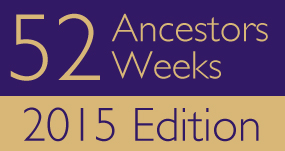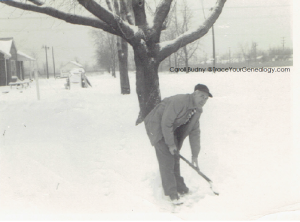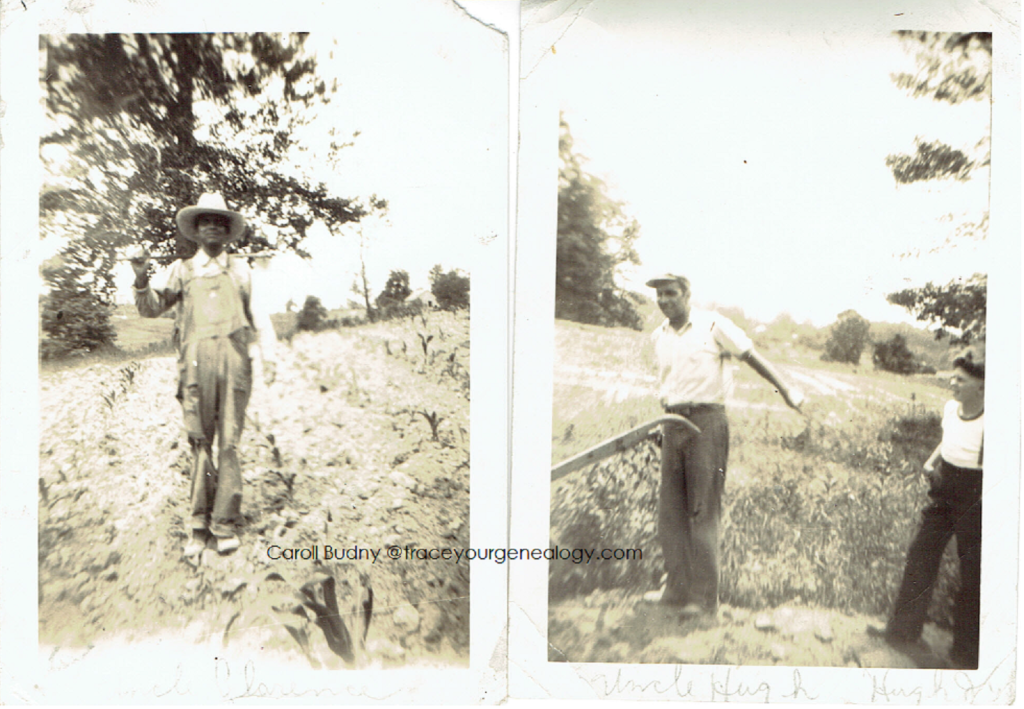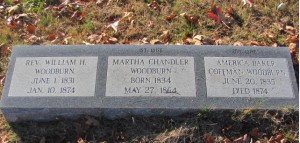Posts Tagged Kentucky Genealogy
#52Ancestors: Week 8 – Elizabeth Thomas – Free Woman of Color
Posted by Caroll in 52 Ancestors, Genealogy Blog on February 24, 2015
This is week eight of the 2015 #52 Ancestors in 52 Weeks Challenge where a group of u s blog about a different ancestor for each week of the year. To learn more about the 52 Ancestor Challenge visit Amy Johnson’s site at Amy’s website.
s blog about a different ancestor for each week of the year. To learn more about the 52 Ancestor Challenge visit Amy Johnson’s site at Amy’s website.
Black History Month
February is Black History Month. African Americans have a difficult time tracing their ancestors. I believe genealogists have a fiduciary responsibility to pass along any information that can be gleaned to help others find their roots. I knew that some of my ancestors owned slaves. Could I find anything information about them to pass along.
Searching Google eBooks, I found a court case involving a known ancestral cousin.
Elizabeth Thomas, F.W.C v Generis & Al
Elizabeth Thomas’s emancipation case was heard in the Louisiana Supreme Court in 1840. She was suing for her right to be a free woman of color. She won her freedom by Ipso facto.
Thomas had lived in Illinois, a state that prohibited slavery, prior to being taken to Louisiana. While in Louisiana, she was sold to another slave owner for $1,000. Thomas’s story starts in Virginia. In her suit, she states that she was born free in the state of Virginia. Around 1814, as a child, she was somehow acquired by Oliver C. Vanlandingham, Senior. Vanlandingham is my fourth great grand uncle. From there, Thomas was taken to Kentucky.
Elizabeth remained at the Vanlandingham farm in Muhlenberg County, KY until 1832. She had been ill for some time and wanted to go to the doctor in Shawneetown, IL. Vanlandingham’s overseer brought Thomas to the Illinois doctor for treatment. Vanlandingham had a merchant store in Shawneetown at the time. He also owned a plantation in Baton Rouge, LA. It is because she lived in Illinois, that Thomas asserted that she was emancipated due to Illinois law.
Thomas lived at the Vanlandingham home for about five years. While living there, she was under the care of Dr. Posey. In 1837, she was transported down to the Louisiana plantation. Shortly after that, she was sold. Thomas then files a lawsuit stating she is a free woman of color (F. W. C) and cannot be made a slave again simply by being conveyed to Louisiana.
Illinois law stated that slavery could not be introduced into the state. Judge Scates opinion of Illinois law is that a slave states that a slave held in involuntary servitude becomes immediately free by the constitution (Illinois). Thomas resided in Illinois with the consent of her master. Being free previously, Ipso facto, by that very fact; she could not be made a slave again.
Vanlandingham’s counsel tried to say that Thomas was taken to Illinois without his knowledge. That she was allowed to see a doctor for humanitarian reasons. That he owned a business there, but not a home. However, Thomas had to live somewhere for five years. And, it was the Shawneetown home belonging to Vanlandingham. The warrantor to the purchase of Thomas contradicted the counsel testimony. The Judges sided with Thomas.
I don’t know what Elizabeth Thomas did after gaining her freedom. Vanlandingham passed away in 1856. He owned over a hundred slaves at one point in his life.
Ownership of those slaves passed to his son, O. C. Vanlandingham, Junior. Junior joined the Confederate Army during the Civil War. When he return home to his plantation after the war, he found his home, and crops destroyed. The slaves had run off.
With the Louisiana property gone, O.C. junior, returned to Paradise, Kentucky to the other family property. On the 1870 Census, he is enumerated among several black families in the area.
Sources:
Reports of Cases Argued and Determined in the Supreme Court of the State of Louisiana …, Volume 16 Louisiana. Supreme Court, Branch Walthus Miller, Thomas Curry, A. T. Penniman & Company, 1841 (Google eBook)
Alternate source: http://bit.ly/1A5iLAk
A History of Muhlenberg County, Otto Arthur Rothert, J.P. Morton, 1913 – Muhlenberg County (Ky.) (Google eBook)
1870 U.S. census, population schedules. NARA microfilm publication M593, 1,761 rolls. Washington, D.C.: National Archives and Records Administration, n.d. Paradise, Muhlenberg, Kentucky; Roll: M593_490
#52Ancestors: Week 5 – Plowing Through Snow or Cornfields
Posted by Caroll in 52 Ancestors on February 1, 2015
This is week five of the 2015 #52 Ancestors in 52 Weeks Challenge where a group of u s blog about a different ancestor for each week of the year. To learn more about the 52 Ancestor Challenge visit Amy Johnson’s site at Amy’s website.
s blog about a different ancestor for each week of the year. To learn more about the 52 Ancestor Challenge visit Amy Johnson’s site at Amy’s website.
This week’s theme is Plowing Through. Whether it is plowing through snow, not likely here in the Pacific Northwest. The last snow I saw was two inches back around Thanksgiving. Or, plowing through online databases trying to find records about your ancestors. I chose to post a couple of family photos of shoveling snow and those turning up the earth.
Plowing through Snow
My grandfather Hugh A. Howes (1902-1961) is shoveling snow in front of the family home on Bennett street in Dearborn, MI. The date listed on the back in on the back says. This is most likely the first winter back in Michigan. The family owned the house in the mid-1940’s. My great Uncle Borden (Bob) Baumgartel and his wife Doris lived in the house for a period when my grandparents moved to Florida around 1945.
My grandparents along with my mother only stayed a couple of years in Florida and returned to Michigan. By this time, Hugh’s oldest sons were either married or serving in the military and would not have been home to shovel the snow.
The photograph shows that there are not many houses on the street. These tracts were once farmland and the west side of Dearborn was growing quickly. The photo graph below is a screen capture of Google Maps (2011), showing a view of Bennett street. The house was sold about 1957. With all their children out of the house, they moved into a apartment.
Turn up the earth of with a plow
Below are photos of two great uncles on the Pittman side of the family. Hugh Pittman (right photo) is using a hand plow to turn over the dirt in the cornfields. The photos were taken in the early 1940’s. The Pittman family was living on Park street in Central City, Kentucky, per the 1940 Census.
Clarence and Hugh Pittman, though in there mid-30’s, were still living with their father, John T. Pittman, subject of the 2014 series of 52 Ancestors – No. 9. Their brother, Finis, and their sister Tena and her husband were also living on the farm. The family suffered economic hardship during the 1930’s Great Depression.
#52Ancestors: Week 4 – America Baker Coffman Woodburn – My Other Gemini Twin
Posted by Caroll in 52 Ancestors, Genealogy Blog on January 25, 2015
This is week four of the 2015 #52 Ancestors in 52 Weeks Challenge where a group of u s blog about a different ancestor for each week of the year. To learn more about the 52 Ancestor Challenge visit Amy Johnson’s site at Amy’s website.
s blog about a different ancestor for each week of the year. To learn more about the 52 Ancestor Challenge visit Amy Johnson’s site at Amy’s website.
This week’s theme is writing about an ancestor that share a birthday close to the author’s. I chose America Baker, a Gemini like me. Her life was much different than mine. She was married twice, bore and lost children and lived never more than 100 miles of her birthplace. Me, I have traveled the world with no familial constraints.
The name “America” as a girl’s name may seem tacky choice to name a child today. The Spanish pronunciation is more popular due to actress América Ferrera. However, this name was popular for girls during the 1800’s. Four of my collateral female ancestors’ have the first name “America.”
America Baker’s grandfather, Jacob Studebaker was one of the early settlers of Muhlenberg County, Ky. The prefix “Stude” was dropped from the surname by her grandfather in the early 1800’s. However, his children and grandchildren continued to switch back and forth between using Studebaker and Baker before settling on “Baker.”
America first husband was, Joseph Coffman. Both the Studebaker’s and Coffman (alt. spelling Kaufman) were of German descent. First settling in Virginia, moving west to Pennsylvania, before settling in Muhlenberg and McLean counties in Kentucky.
Both her grandfather and father, Samuel Baker, owned slaves. As well as the Coffman family. On the 1860 Slave Schedule, both Joseph Coffman and Samuel Baker, each own one slave. Each slave has a remark listed that they may belong to the estate of James Rust. America and Joseph live in a farm next to her father. They could have farmed tobacco or hops.
America and Joseph have two daughters, Nancy (Nannie) (b. 1858) and Fredonia (circa 1859). Fredonia is not listed on the 1870 Census and may have passed away. America becomes a widow in 1862 when Joseph dies.
In 1868, America marries, William H. Woodburn. William is my first cousin, five times removed. The marriage is also his second. America becomes a step-mother to William’s four children. One of those is William T. Woodburn, who is four at the time of the marriage. He is not listed on the 1870 Census, either. He may be the child who, listed as Thomas Woodburn, age 5; dies of brain fever; according to the 1870 Mortality Schedule.
Allegedly there were three daughters born to this marriage. A daughter named, Martha, age one, is enumerated on the 1870 Census. William’s, three children from his first marriage, Charles, Mary, and Richard are included, along with America’s daughter, Nannie Coffman. There is some records and a few family trees that may support the existence of the other two children. I did find a discrepancy on the 1880 census that may point to a different direction.
Unfortunately, America becomes a widow again when William passes away in 1874. She is now 35 years old. It is not known if she had any property or money from her first husband, Joseph Coffman. William Woodburn was both a farmer and Baptist reverend. William’s sons, Charles or Richard may have inherited the farm or it was sold off.
William’s headstone lists both his wives. The death date for America Baker Coffman lists 1874 as the year of her death. This is another discrepancy as America may have lived past 1880. There is erroneous information that incorrectly attaches a death date of 1908 for America because of similar named individual. I believe America Baker Coffman Woodburn most likely died before 1900.
An 1874 marriage bond for Nannie Coffman, indicates she will marry James Williams at America Woodburn’s house on May 3, 1874. I find America Woodburn enumerated on the 1880 Census with James and Nannie Williams, along with their three children. America is listed as a boarder. Not listed, is Martha Woodburn, America’s daughter by William Woodburn. This may be an indication that Martha has died.
If America had any children with William Woodburn that lived through their infancy, where are they? The other two supposed daughters were named, Anna and Hallie Woodburn. They would be under 10 years of age in 1880. America could have been visiting Nannie in 1880. But who would have watched the children if she was just visiting. I have not found a record, yet, that leads me to them.
America suffered the loss of two husbands, two of her own children and one step-child by the age of. With no property of her own she lives with her oldest daughter. She has lived all her life in Kentucky.
Source Photo: Find A Grave, database and images (http://findagrave.com : accessed 25 January 2015, memorial page for America Baker Woodburn (1835–1874), Find A Grave Memorial no. 120794769, citing Bethel Church Cemetery, Muhlenberg County, Kentucky; the accompanying photograph by Anita R. Austill are materially informative, but do not provide a legible image of the inscribed data.
#52Ancestors: Week 3 – Elizabeth Oliver Brumley and her Colonial Resilience
Posted by Caroll in 52 Ancestors, Genealogy Blog on January 18, 2015
This is week three of the 2015 #52 Ancestors in 52 Weeks Challenge where a group of u s blog about a different ancestor for each week of the year. To learn more about the 52 Ancestor Challenge visit Amy Johnson’s site at Amy’s website.
s blog about a different ancestor for each week of the year. To learn more about the 52 Ancestor Challenge visit Amy Johnson’s site at Amy’s website.
Born just before the eve of the American Revolution in Virginia, Elizabeth O. Brumley surely was quite educated for a woman of her time. Women of the gentry or well-to-do class acquired an education that included practical, literary, and ornamental skills. 1 Elizabeth instilled the importance of education into her children.
Her son, Oliver C. Vanlandingham, Sr.; ran a mercantile business while maintain a farm in Kentucky and eventually building a plantation in Louisiana. Her daughter, Elizabeth Vanlandingham, married Samuel Weir, a wealthy famer and brother to Oliver’s business partner, James Weir.
Elizabeth Brumley married Ezekiel Vanlandingham circa 1782. Ezekiel must have prospered well in Virginia, nonetheless, he sought new endeavors. Seeking rich farm lands and good hunting, the Vanlandingham’s set-off from Northumberland, VA to Muhlenberg County, Kentucky in the early 1790’s. Unfortunately, Ezekiel, died somewhere along the journey.
The options were to travel north to the Ohio River then follow the river down toward Kentucky. The Wilderness Road and Boone Trace led a pass through the Appalachian Mountains. A third longer route would be to sail around Florida to Louisiana and the Mississippi River north. My guess that the family traveled overland.
It is not known where or how Ezekiel died on this journey. He was young, having been born in June 1762 in VA. Oliver Vanlandingham recalled that he traveled to Kentucky as a young boy. Elizabeth Brumley made the decision to continue to Kentucky and not return to Virginia after her husband’s death.
Travelling to Kentucky at the turn of the 19th Century was treacherous. Pioneers who came over the Wilderness Road, endured severe hardships. The Wilderness Road was steep, rough, narrow, and it could only be traversed on foot or horseback. Because of the threat of Native American attacks, the road was so dangerous that most pioneers traveled well-armed. Robbers and criminals also could be found on the road, ready to pounce on weaker pioneers.2
Why was she so decisive in moving forward into the unknown? Why was it a better option then turning back to a more civilized and settled Virginia? She was indeed a strong, tough woman. That resilience continued when the family arrived in Muhlenberg County. Elizabeth bought her own land, farmed and reared her family there until her death in 1833.
Footnotes:
1) Women and Education in Eighteenth-Century Virginia by Linda Rowe, http://research.history.org/Historical_Research/Research_Themes/ThemeFamily/WomenEducation.cfm
2) Wilderness Road Wikipedia: http://en.wikipedia.org/wiki/Wilderness_Road
#52Ancestors: Week 2 – James Larkin King
Posted by Caroll in Genealogy Blog on January 11, 2015
This is week two of the 2015 #52 Ancestors in 52 Weeks Challenge where a group of u s blog about a different ancestor for each week of the year. To learn more about the 52 Ancestor Challenge visit Amy Johnson’s site at Amy’s website.
s blog about a different ancestor for each week of the year. To learn more about the 52 Ancestor Challenge visit Amy Johnson’s site at Amy’s website.
Our theme inspiration for this week is “Kings,” in honor of Elvis’s and Martin Luther King. Did we have any royal relatives, or those who fled oppression? Since I have a King surname in my collateral family tree, I chose to write a short post about them.
I wrote about Ervin and May King in the 2014 Challenge #52Ancestors No. 34 Just A Photo In A Box. James Larkin King is their grandfather. James was born in Henderson County, Kentucky, in 1856. He married Mary Elizabeth Toy in 1873. James and Elizabeth had five known children, Rose Etta, Laura, Eliza, L. Marvin, and Ewin O.
James may have died in 1899 or later. There is a listing at FindAGrave, however, no records or good sources can verify date of death. I have not been able to affirmatively find a reference to the family in the 1900 and 1910 censuses. They just seem to be an enigma. I even tried searching forward and tracing using the children’s names and have not had much luck.
The family at one time lived near Robards (pronounced Roberts) in Henderson Co. Elizabeth Toy’s mother is Martha Frances Robards. Robards was founded by J.D. Robards just after the Civil War. Triplett is also a well known surname in Robards. Rose Etta married John W. Triplett and had one child.
These surnames are listed in the “History of Henderson County” by Edmund L. Starling, printed in 1887. It is available for free at Google Books. If I had more direct ties to this county and family, I would give the book a more thorough read. For now it goes on a research log.





Recent Comments